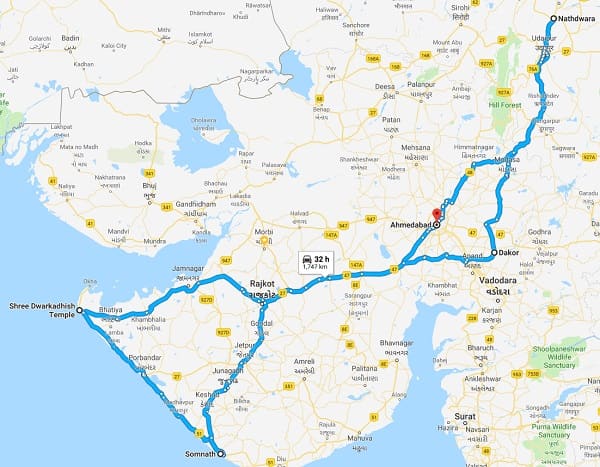చండీ హోమం మంచి ఆరోగ్యం మరియు సంతోషకరమైన కుటుంబ జీవితాన్ని ఆస్వాదించడానికి చేసే శక్తివంతమైన హోమం. దుర్గాదేవిని ప్రసన్నం చేసుకోవడానికి మరియు ఆశీర్వదించడానికి చండీ హోమం జరుగుతుంది. దేవి మహాత్యంలో పేర్కొన్న విధంగా చండీ అనే పేరు దుర్గాదేవి యొక్క మరొక పేరు.
హిందూ మతంలో శక్తి (దేవి లేదా ఆది పరశక్తిని సర్వోన్నత దేవుడిగా భావించే భక్తులు) అనుచరులలో హోమం ఆరాధన యొక్క అత్యున్నత రూపంగా పరిగణించబడుతుంది.
దుర్గదేవి యొక్క భీకర మరియు ఉద్వేగభరితమైన రూపంగా చండీ దేవిని సూచిస్తుంది. దేవి మహాత్మయం ప్రకారం, దేవిని పద్దెనిమిది సాయుధంగా చిత్రీకరించారు, ప్రతి ఒక్కటి వేరే ఆయుధాన్ని కలిగి ఉంటాయి.
దేవతను విశ్వ తల్లిగా మరియు స్త్రీ శక్తి మరియు శక్తి యొక్క స్వరూపులుగా భావిస్తారు. ఆమె బ్రహ్మ, విష్ణువు మరియు శివుని పవిత్ర త్రిమూర్తుల సృష్టికర్త అని కూడా నమ్ముతారు.
చండీ హోమం ఎవరు చేయాలి?
చండీ హోమం చేయాల్సిన వ్యక్తుల జాబితా ఇక్కడ ఉంది:
- తీవ్రమైన దోషాలతో బాధపడుతున్న వ్యక్తి లేదా వారి జాతకంలో గ్రహాల నియామకాల వల్ల కలిగే దుష్ప్రభావాలు చండీ హోమం చేయాలి.
- చేతబడి, శాపాలు మరియు ప్రతికూల శక్తితో బాధపడుతున్నట్లు అనుమానించబడిన ఏ వ్యక్తి అయినా చెడు ప్రభావం నుండి బయటపడటానికి హోమం చేయమని సలహా ఇస్తారు.
- పురాతన గ్రంథాల ప్రకారం, సాధారణంగా భయాన్ని, ముఖ్యంగా మరణ భయాన్ని అధిగమించడానికి హోమం చేయాలి.
- తమ జీవితంలో చేసిన ఏదైనా దుర్మార్గానికి పాల్పడితే ప్రాయశ్చిత్తం లేదా దేవత నుండి క్షమాపణ కోరుకునేవారికి కూడా హోమం సిఫార్సు చేయబడింది.
చండీ హోమం వల్ల కలిగే ప్రయోజనాలు ఏమిటి?
చండీ హోమం యొక్క ప్రయోజనాల జాబితా ఇక్కడ ఉంది:
- చండీ హోమం చేయడం ద్వారా ఆరోగ్యం మరియు కుటుంబ వివాదాలకు సంబంధించిన సమస్యలను పరిష్కరించగలరని నమ్ముతారు.
- శాపాలు మరియు అడ్డంకుల ప్రభావాలు ఒక వ్యక్తి యొక్క జాతకం నుండి తొలగించబడతాయి.
- భక్తుడి జీవితంలో పేరు, కీర్తి మరియు విజయాన్ని సాధించడానికి హోమం నిర్వహిస్తారు.
- హోమం చేయడం విజయవంతం మరియు జీవితంలో శత్రువులు లేదా విరుద్ధమైన అంశాలపై విజయం సాధిస్తుంది.
చండీ హోమం ఎప్పుడు చేయాలి?
నవరాత్రి 9 రోజులు చండీ హోమం చేయటానికి శుభప్రదంగా ఉన్నాయి. అలాగే, అష్టమి, నవమి, చతుర్దాసి, మాఘా అమావాస్య, జ్యేష్ఠ అమావాస్య, చైత్ర, కార్తీక్ పౌర్ణమి వంటి పవిత్రమైన రోజులు హోమం చేయటానికి మంచివి. పగటిపూట హోమం చేయటం మరియు సూర్యాస్తమయం ముందు కర్మలు పూర్తి చేయడం ప్రాధాన్యత.
చండీ హోమం చేసే విధానం ఏమిటి?
చండీ హోమం ఎలా చేయాలో ఇక్కడ ఉంది:
- భగవంతునికి అంకితం చేయబడిన అన్ని ఆచారాలకు మొదటి కొన్ని ఆచారాలు సాధారణం. చండీ హోమం అనుజ్న (దేవత నుండి అనుమతి), అకామనా (స్వీయ శుద్దీకరణ), ప్రాణాయామం (శరీరం లోపల ఆధ్యాత్మికతను పెంచడానికి), మరియు సంకల్ప్ (కర్మను పూర్తి చేయడానికి ప్రతిజ్ఞ తీసుకోండి) తో ప్రారంభమవుతుంది.
- గణపతి పూజ లేదా హోమం మొదట గణపతిని ప్రసన్నం చేసుకోవడానికి నిర్వహిస్తారు, ఎవరి ఆశీర్వాదం లేకుండా, ఏమీ సాధించలేరు.
- కలస శుద్ధి ప్రక్రియ తరువాత అగ్ని ప్రతిష్ఠాన జరుగుతుంది. ఈ విధానంలో హోమ కుండం లోపల అగ్నిని కర్పూరం, ఎండిన కొబ్బరి మరియు దర్భ గడ్డితో ప్రారంభిస్తారు. నాలుగు దిశల పాలకులను గౌరవించటానికి దిగ్పాలక పూజను పక్కన చేస్తారు.
- ఈ హవన్ యొక్క విస్తృతమైన రూపంలో, పంచోపాచార పూజ లేదా షోడసోపాచారా పూజలు కూడా నిర్వహిస్తారు.
- గో-పూజ, పరివార పూజ, సుహాసిని పూజ, దంపతి పూజ, బ్రహ్మచారి పూజలు యజ్ఞానికి ముందు నిర్వహిస్తారు.
- పూజలో సప్తశతి పరయణం ప్రధాన భాగం. సప్తషాతి యొక్క పదమూడు అధ్యాయాలలో మహాకళి, మహాలక్ష్మి, మరియు మహాసారస్వాతికి 3 భాగాలు ఉన్నాయి. ఈ 13 అధ్యాయాలు సమిష్టిగా 700 శ్లోకాలను కలిగి ఉన్నాయి, అవి హోమం పూర్తి చేయడానికి తప్పక పఠించాలి.
- హోమం యొక్క చివరి విభాగంలో ఉత్తరంగం (ధన్యవాదాలు ఓటు) మరియు పూర్ణహుతి (చివరి సమర్పణ) ఉన్నాయి.
చండీ హోమానికి అవసరమైన పదార్థాలు ఏమిటి?
హోమి కుండం (చదరపు ఆకారంలో ఉండే రాగి కంటైనర్), పొడి కొబ్బరి, నెయ్యి, లాడిల్, ముడి బియ్యం, కుంకుమ్, పసుపు, అగర్బట్టిస్ (ధూపం కర్రలు), దీపాలు, తీర్థ నాళాలు, పువ్వులు మరియు నీరు.
పండ్లు, బెల్లం లేదా పంచమృతం వంటి దేవతకు అర్పించే ప్రత్యేక ఆహారాన్ని తయారుచేయాలి. నువ్వులు మరియు కర్పూరం తో పాటు దర్భ గడ్డి ఐచ్ఛికం.
చండీ హోమం ఎక్కడ చేయాలి?
చండీ హోమం చాలా విస్తృతమైన హోమం మరియు సాధారణంగా అనేక మంది పూజారులు కలిసి పెద్ద హోమ కుండ ముందు చేస్తారు. మంగళూరులోని శ్రీ దుర్గా పరమేశ్వరి ఆలయం, మూకాంబికలోని శ్రీ మూకాంబికా ఆలయం, మైసూరులోని చాముండేశ్వరి ఆలయం మరియు ముంబైలోని మహాలక్ష్మి ఆలయం వంటి దుర్గాదేవి లేదా పార్వతికి అంకితం చేసిన అన్ని ప్రధాన ఆలయాలలో హోమం చేయవచ్చు.
ఏదేమైనా, చివరి నిమిషంలో ప్రణాళికలకు తేదీలు సాధారణంగా అందుబాటులో లేనందున చండీ హోమం కోసం బుకింగ్ నెలలు ముందుగానే చేయాలి.
చండీ హోమం ఖర్చు ఎంత?
చండీ హోమం చాలా విస్తృతమైన విధానం కాబట్టి, హోమం ఖర్చు కొన్ని దేవాలయాలలో ₹ 15,000 నుండి ₹ 30,000 వరకు ఉంటుంది.









